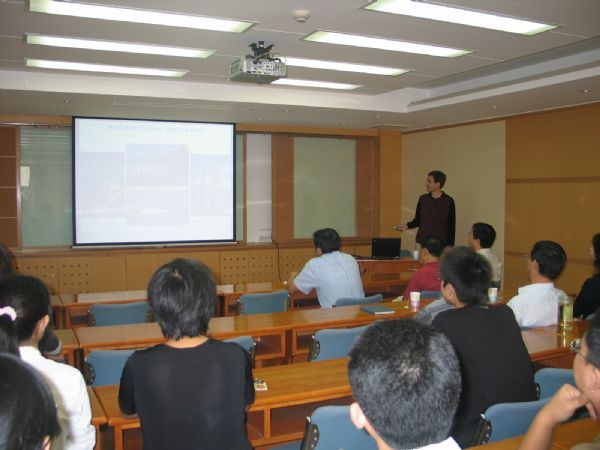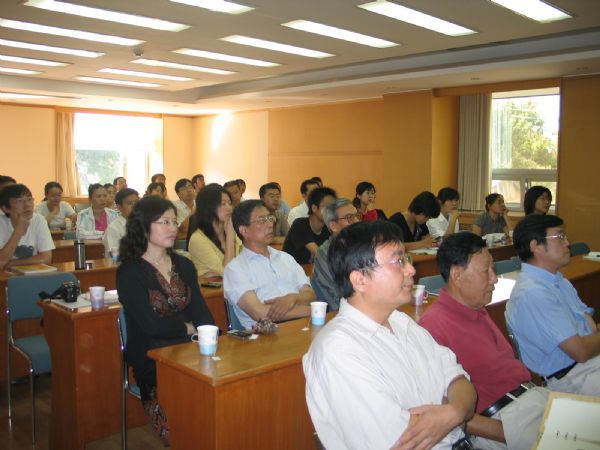(From Xu Delong of Ultrasonic Physics and Exploration Laboratory)On Sep. 18, Rolf Muller, the professor of School of Physics & Microelectronics, Shandong University, visited the Institute of Acoustics (IOA) and gave a lecture titled "Acoustics Lessons From Bats". Prof. Wang Xiaomin, the associate director of IOA, welcomed him and took charge the seminar. Prof. Li Mingxuan, Prof. Mao Jie etc. attended the seminar.
Prof. Muller engaged in research of biomimetic robotics, sonar target classification and biomimetic smart antenna shape. In his report, Prof. Muller introduced biomimetic technology, biosonar and technological needs et al. Based on the research of ultrasonic wave emitted by bat through their nostrils, the relationship between the ultrasonic wave distribution and the structure of nostrils of bats and the their ears' structure, he showed the importance of beamforming.
To solve the two questions- "How to distribute energy sensitivity in space" and "How to generate and control the directivity", Prof. Muller set up the shape database of bat noseleaves (about 600 shapes) and did a lot of numerical analyses. Furthermore, he analyzed the beamforming phenomena of the bat's ears for different frequencies and their directivities.
At the end of the seminar, Wang Xiaomin and the researchers of IOA discussed with Prof. Muller.
|
Prof. Muller-Short CV (information fromhttp://www.phym.sdu.edu.cn/rolf/)
Rolf Muller received both his MSc. and his Ph.D. (summa cum laude) from the University of Tubingen in Germany. He has been a postdoctoral fellow with the Electrical Engineering Department of Yale University for two years. From August 2000 to June 2003, he has headed the "Biosonar Lab", a start-up at the University of Tubingen. From 2003 until 2005, he has been an assistant professor at theMaersk Mc-Kinney Moller Institute for Production Technology. Since 2005, he is a full Professor of Physics at theSchool of Physics & Microelectronics,Shandong University. His research interests are bioinspired beamforming and robotics, in particular in conjunction with sonar sensing, as well as statistical neural coding in biosonar systems seen from an engineering perspective. For this purpose he has been studying the noseleaf and ear shapes of bats with numerical methods and has been developing both robotic and computational models. Since 1995 he has published more than 60 journal and international conference papers on these topics. He has received scholarships from the German Merit Foundation, a NATO postdoctoral fellowship through the German Academic Exchange Agency (DAAD), the Dissertation Award of the University of Tubingen, and the "Top Ten Scholars in the News" award of Shandong University (2006). |
 |

